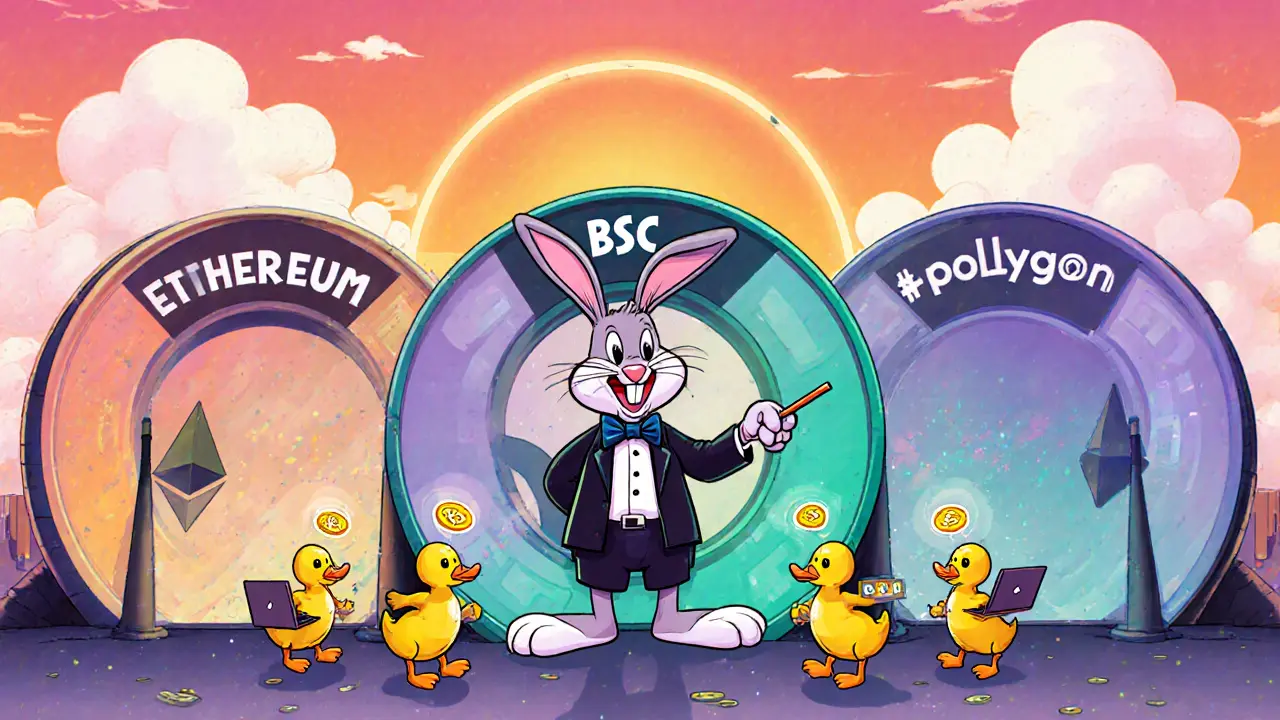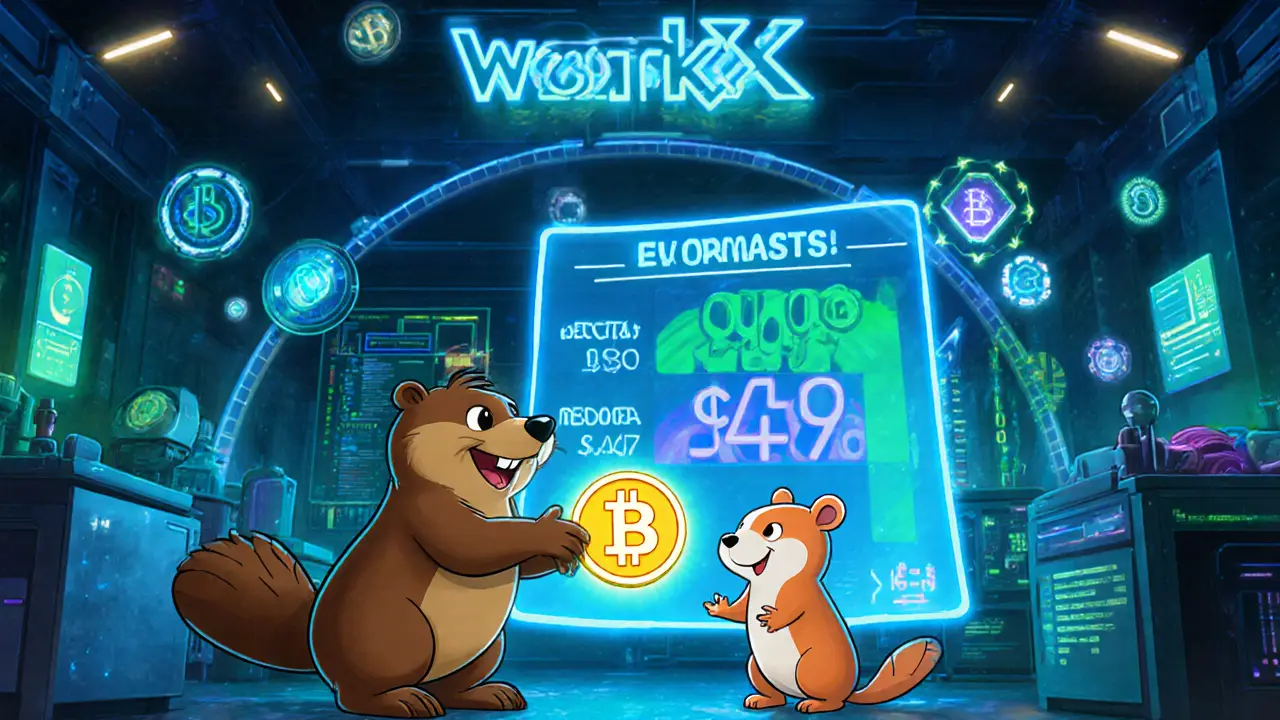
IDEA Token Value Calculator
Current IDEA Token Information
- Price: $0.000047
- Total Supply: 500,000,000
- Circulating Supply: 500,000,000
- 24h Volume: $216,000
Risk Assessment
High volatility due to concentrated ownership and limited exchange listings.
Projected Price Range (2026-2029)
- Conservative: $0.05
- Moderate: $0.40
- Optimistic: $1.47
Investment Calculator
Enter your holdings to calculate potential returns and risk exposure.
Enter your holdings and investment details to see potential returns and risk analysis.
Key Risk Factors
- Token Concentration High
- Exchange Listing Limited
- Regulatory Risk Medium
- Market Volatility High
When you hear the name Ideaology, it might sound like another hype‑driven crypto project. In reality, it’s a multi‑chain platform built to run IDOs and a DEX across Ethereum, Binance Smart Chain and Polygon. This guide walks you through what Ideaology actually does, how the IDEA token is structured, and what to expect if you’re thinking about getting involved.
What is Ideaology?
Ideaology is a multi‑chain Initial DEX Offering (IDO) platform and decentralized exchange (DEX) that connects innovators, developers, and investors in a single ecosystem. Launched in 2021, the project aims to replace centralized launchpads with a permission‑less environment where anyone can list a token pool, set a fixed price, and let the market decide the outcome.
How does the IDEA token work?
The native asset, IDEA token functions as both a utility and governance token within the Ideaology ecosystem. Its total supply is capped at 500million, with all 500million already in circulation. The token price currently hovers around $0.000047, and 24‑hour trading volume sits near $216k, according to recent market data.
- Supply: 500million (100% circulating)
- Allocation: 2.22% sold during the ICO, the rest reserved for team, development, and ecosystem incentives
- Utility: Pay fees on the DEX, stake for yield farming, and vote on platform upgrades
Early investors who bought during the ICO at $0.09 faced a massive loss -‑ about -99.8% compared to today’s price -‑ but the token once spiked to a 950% ROI at its peak. This swing illustrates the high‑risk, high‑reward nature of many early‑stage crypto projects.
Multi‑chain architecture: Ethereum, BSC, and Polygon
Ideaology runs on three major blockchains, each bringing its own strengths:
- Ethereum offers robust security and a large developer community.
- Binance Smart Chain (BSC) delivers low transaction fees and fast block times.
- Polygon provides a layer‑2 scaling solution that further cuts costs.
This multi‑chain setup reduces congestion, lets users pick the cheapest route, and opens the door for cross‑chain token pools. In practice, a project can launch an IDO on BSC for cheap gas while still offering Ethereum‑based liquidity to attract a broader audience.
IDOs, DEX, and the permissionless launchpad
At its core, Ideaology is an Initial DEX Offering (IDO) service that allows projects to raise funds directly on a decentralized exchange. Here’s a quick rundown of how a typical IDO works on the platform:
- Project creates a fixed‑swap pool, setting a token price and total allocation.
- Investors whitelist their wallets, ensuring compliance and preventing bots.
- During the sale window, whitelisted users trade stablecoins (or other crypto) for the new token.
- After the sale, the token lists automatically on Ideaology’s DEX, where liquidity can be added for trading.
The DEX is fully permissionless - anyone can provide liquidity or trade without needing a central authority. This design mirrors other DeFi exchanges but adds the IDO “launchpad” layer on top.

Roadmap highlight: WorkX and beyond
Ideaology isn’t stopping at fundraising. The upcoming WorkX is a secondary launchpad focused on matching developers with crypto startups. Think of it as a decentralized freelance marketplace where founders can post open‑source roles and skilled coders can apply directly, all powered by IDEA tokens.
- Q42025: Beta launch of WorkX with limited project listings.
- Q22026: Full integration of staking rewards for contributors.
- 2027+: Expansion to support cross‑chain developer bounties.
By branching into talent acquisition, Ideaology hopes to become a one‑stop shop for early‑stage crypto teams, not just a fundraising hub.
Market performance and price outlook
Price charts show a volatile history. Over the past seven days, IDEA fell about 21% while the 24‑hour volume remains modest. Long‑term forecasts from modeling firms paint a mixed picture: some scenarios predict a rise to $0.40 in 2026 and even $1.47 by 2029, but others warn of possible drops below $0.05 during market corrections.
Key drivers that could sway the token’s future include:
- Successful launch and adoption of WorkX.
- Partnerships with high‑profile projects that use Ideaology’s multi‑chain IDO service.
- Regulatory clarity around decentralized fundraising in major jurisdictions.
If any of these factors line up, the token may see a meaningful price bump. Conversely, limited exchange listings (major centralized venues like Binance do not list IDEA) keep the community largely on DEXes, which can suppress liquidity and price stability.
Risks and user considerations
Before you allocate any capital, keep these points in mind:
- Concentrated token distribution: Over 90% of tokens are held by the team, early investors, and reserve funds, which could lead to price swings if large holders sell.
- DEX‑only access: Newcomers must manage a Web3 wallet and interact with decentralized exchanges - a hurdle for anyone unfamiliar with Metamask or Trust Wallet.
- Regulatory risk: Decentralized fundraising platforms are under increased scrutiny globally; future legislation could affect Ideaology’s operations.
- Market adoption: With a CryptoRank position over 2,200, IDEA is still a niche asset compared to top‑tier DeFi tokens.
In short, treat IDEA as a speculative asset. Only invest money you can afford to lose, and consider diversifying across multiple DeFi projects.
Comparison: Multi‑chain IDO platforms vs. single‑chain launchpads
| Feature | Multi‑chain (Ideaology) | Single‑chain (e.g., Ethereum‑only launchpad) |
|---|---|---|
| Supported networks | Ethereum, BSC, Polygon | One blockchain only |
| Average gas cost | Low‑to‑moderate (choice of chain) | Typically higher (Ethereum) |
| User base | Cross‑chain traders, developers | Platform‑specific community |
| Liquidity options | Cross‑pool swaps across chains | Single‑chain liquidity pools |
| Complexity for newbies | Higher - need to understand multiple networks | Lower - single wallet configuration |
Choosing a platform depends on your priorities. If you value low fees and flexibility, a multi‑chain solution like Ideaology may be worth the extra setup effort.
Next steps for interested users
- Set up a Web3 wallet (MetaMask, Trust Wallet, or Binance Chain Wallet).
- Acquire a small amount of ETH, BNB, or MATIC to cover transaction fees.
- Visit the official Ideaology DEX URL, connect your wallet, and locate the IDEA token contract address.
- If you want to participate in an upcoming IDO, whitelist your address on the project’s page.
- Consider staking IDEA in the platform’s farms to earn additional rewards while you hold.
Always double‑check contract addresses on the official site or reputable community channels to avoid scams.

Frequently Asked Questions
What distinguishes Ideaology from other IDO launchpads?
Ideaology runs on three blockchains (Ethereum, BSC, Polygon), letting projects pick the cheapest network for their sale. It also combines a DEX and a future freelance marketplace (WorkX) in one ecosystem, whereas many launchpads are single‑chain and focus only on fundraising.
How can I buy IDEA tokens?
IDEA isn’t listed on major centralized exchanges. You need a Web3 wallet and must trade on a decentralized exchange that supports the token’s contract on Ethereum, BSC, or Polygon. Look for the official contract address on Ideaology’s website before swapping.
Is staking IDEA profitable?
Staking rewards vary with pool size and platform incentives. Currently, Ideaology offers yield farms that pay fees and additional IDEA tokens, but returns depend on overall trading volume, which is modest at around $200k daily.
What is the risk of token concentration?
Since only about 2% of the supply was sold to the public during the ICO, the majority sits with the team, early backers, and reserve wallets. Large sell‑offs from these holders could trigger sharp price drops.
When will WorkX be available?
The roadmap aims for a beta release in Q42025, with full public access expected in early 2026. Updates will be posted on the official Ideaology blog and Discord channel.





